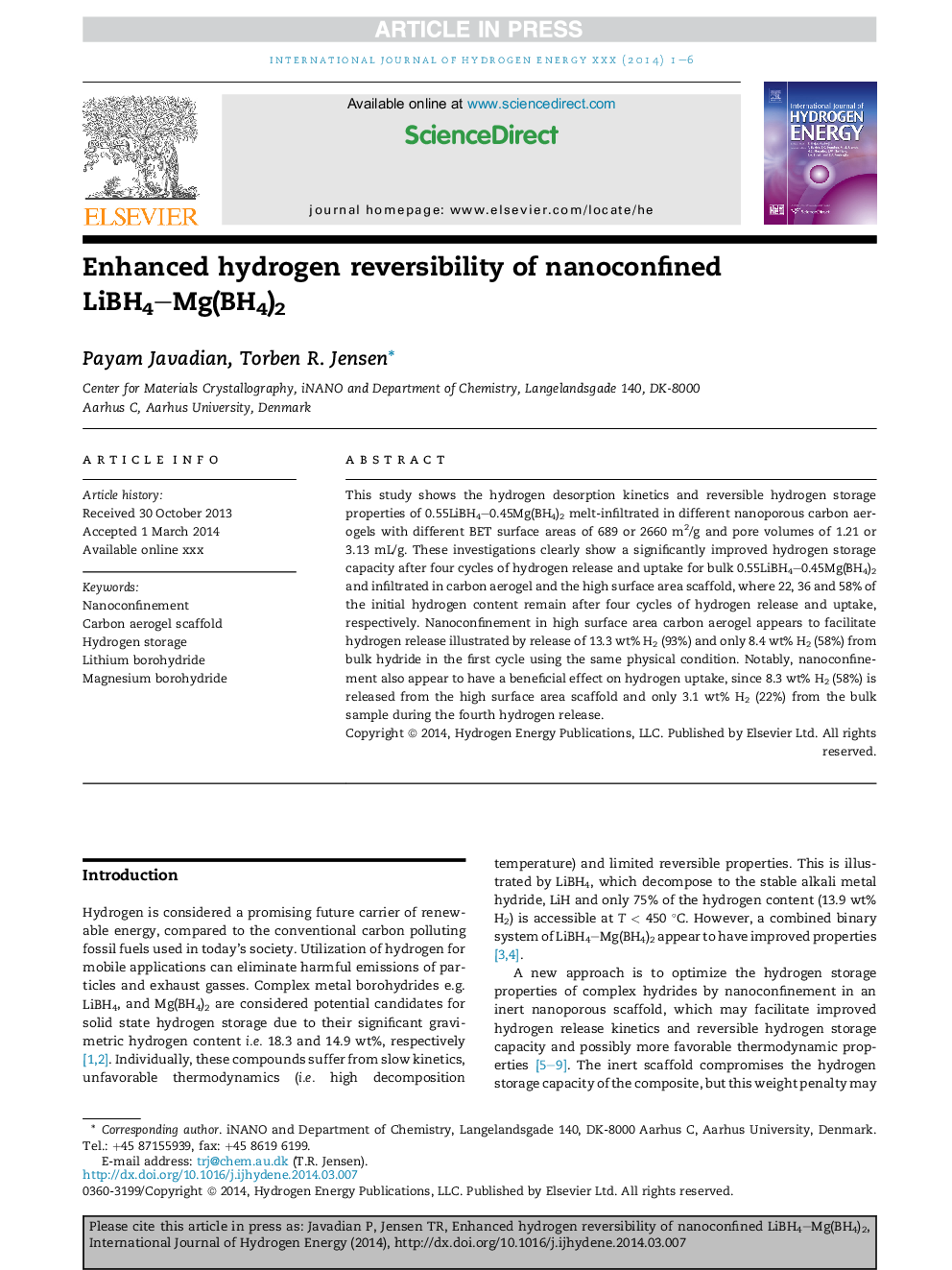| Article ID | Journal | Published Year | Pages | File Type |
|---|---|---|---|---|
| 7719279 | International Journal of Hydrogen Energy | 2014 | 6 Pages |
Abstract
This study shows the hydrogen desorption kinetics and reversible hydrogen storage properties of 0.55LiBH4-0.45Mg(BH4)2 melt-infiltrated in different nanoporous carbon aerogels with different BET surface areas of 689 or 2660Â m2/g and pore volumes of 1.21 or 3.13Â mL/g. These investigations clearly show a significantly improved hydrogen storage capacity after four cycles of hydrogen release and uptake for bulk 0.55LiBH4-0.45Mg(BH4)2 and infiltrated in carbon aerogel and the high surface area scaffold, where 22, 36 and 58% of the initial hydrogen content remain after four cycles of hydrogen release and uptake, respectively. Nanoconfinement in high surface area carbon aerogel appears to facilitate hydrogen release illustrated by release of 13.3Â wt% H2 (93%) and only 8.4Â wt% H2 (58%) from bulk hydride in the first cycle using the same physical condition. Notably, nanoconfinement also appear to have a beneficial effect on hydrogen uptake, since 8.3Â wt% H2 (58%) is released from the high surface area scaffold and only 3.1Â wt% H2 (22%) from the bulk sample during the fourth hydrogen release.
Related Topics
Physical Sciences and Engineering
Chemistry
Electrochemistry
Authors
Payam Javadian, Torben R. Jensen,
